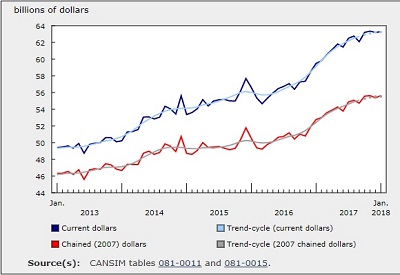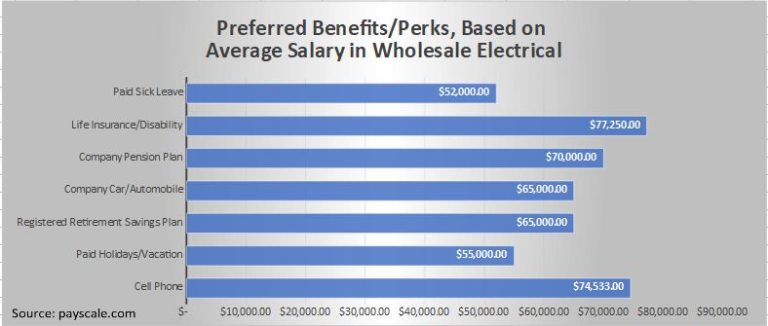The Evolving Role of CFOs Among Manufacturers and Distributors

Apr 1, 2019
Access to B2B-related data is improving, making data-driven decisions and awareness across each organization widespread. As this awareness drives upward towards chief financial officers (CFOs), they are becoming more involved in business processes across the organization and making practical decisions about the operational futures of their companies.
While the core responsibilities of the CFO remain the same, CFOs and other C-Suite executives are driving business value with more agile, results-based decision-making fuelled by greater access to data and greater visibility into other departments. As they continue to become more technology inclined, CFOs are influencing functional developments across the organization.
A new report from B2B Online explores how these factors contribute to more innovative business models as part of the overarching financial responsibilities inherent to the traditional role of the CFO. Complete with planning attributes, system knowledge, resource management, and staff efficiency attributes, these leaders are responding with more detailed involvement, delegation, and interactivity.
Key findings
• 98% of survey respondents are C-Suite executives (82%) and vice presidents of finance (16%). One percent are finance executives and 1% are among finance department leadership
• 83% of respondents believe access to data in their organization is improving, increasing awareness and data-driven decisions among their leadership
• 81% of respondents claim they have increasingly (57%) or entirely (24%) achieved direct oversight and influence over decision-making processes, and 90% of respondents believe they are directly driving business value in key departments
• 50% of respondents believes CFOs must make the most progress in their role as “The Leader,” executing growth strategies and building financial models that drive success
About the study
Respondents to the survey are nearly evenly divided in terms of representing manufacturers (51%) and distributors (49%).
Researchers targeted only top financial leadership figures in their investigation of their evolving roles. A considerable majority (82%) of respondents are C-suite executives, including CFOs and others. Sixteen percent of respondents are vice presidents of finance, and 1% are finance executives or finance department leadership, in each case.
All sizes of manufacturers and distributors are represented in the study in terms of annual revenue:
• 23% of the manufacturers and distributors in the study have $2 million to $20 million in annual revenue (all figures cited are in U.S. dollars)
• almost half (46%) have from $20 million to $100 million in annual revenue
• most remaining companies have $100 million to $200 million (30%) or more than $200 million (1%) in annual revenue
Improving leadership with data access
CFOs and other leaders are using a more practical approach in their decision-making as a direct result of data availability. Data access creates a web of functionalities and responsibilities, such as specific development, individual product ranges, and measures, thus enabling the financial department to consult and provide valuable feedback for any modifications. Now, the duty of guarding data integrity is one in which even CFOs needs to participate.
• 83% of respondents believe access to data in their organization is improving, i.e. increasing awareness and data-driven decisions among their leadership
• 17% do not
Improvement of data access has created opportunities wherein CFOs can now initiate new processes that drive favourable returns. According to respondents, this is now a major responsibility that comes with better data management.
To facilitate the type of data access that can help them deliver on this new responsibility, it is now more important than ever for CFOs to partner with a technology platform that provides real-time insights, reporting and analytics in intuitive formats, such as dashboards and dynamic graphical interfaces.
As a result, consistent data are now a required condition among company leadership. According to respondents, with a lack of consistent data, they could provide misleading information that will lead to operational consequences. For some companies, it has become the financial department’s duty to provide accurate data so that it can be used to report on all key performance indicators (KPIs).
Increasingly, financial departments need a system with built-in reporting that delivers KPI data consistently and accurately.
Even as executives’ access to data becomes the norm, respondents highlight the importance of the CFO’s role in strategy, maintaining financial discipline, and enhancing the integrity of the organization overall. Specifically, 50% of respondents believe CFOs must continue to make progress in their role as ‘The Leader,’ executing growth strategies and building financial models that drive success. Using a single, unified system is one way CFOs can provide themselves with better insight into operations across departments. This type of visibility is critical for helping organizations grow.
The remaining leadership characteristics score much lower in terms of priority among respondents:
• Less than half as many respondents believe CFOs need to make more progress maintaining a holistic, real-time view of risks, and maintaining a cost-effective organization
• 20% believe CFOs must provide financial perspectives to managers so they can make more effective business decisions. With better data access standards, CFOs will take on more of these responsibilities, especially as they pertain to budget and financing in relation to assessment, investments, and ultimately execution.
• 7% believe their CFOs must improve how they control strategic activities while delegating low-level, yet critical, financial functions.
According to one C-Suite executive, there will be deviations from CFOs’ traditional leadership positions with more involvement in other departments and meeting goals through teamwork rather than delegation.
CFOs who rely on legacy or disparate systems lack the means to effectively delegate financial functions and collaborate with their colleagues in other departments. Instead, CFOs need systems that give them a clear understanding of data from their own department, as well as others.
Greater involvement in departmental decision-making
Technological changes and greater data consistency from all sectors of the organization will make decision-making more agile. The responsibility of decision-making will become more straightforward as a result of those data and empower executives to dive deeper into operational aspects of the organization.
In fact, 81% of respondents claim they have increasingly (57%) or entirely (24%) achieved direct oversight and influence over decision-making processes, empowering themselves and other leaders to become more involved in strategic planning.
Fewer respondents (18%) believe they have not done enough to empower themselves, claiming they are working on these changes but they have no real results at this time. Only 1% claim they have made no meaningful efforts to become more involved in processes and strategic decisions.
As we will find, half of respondents believe the support they receive from their existing analytics technology in terms of visibility, oversight, and involvement in decision-making is either in need of improvement (47%) or poor (3%). As a result, organizations will need to invest in technology that gives them better visibility into their entire organization, enabling the most effective decision making possible.
Educating the C-Suite on data and technology literacy is one way to increase both the visibility and security of high-level data. Cloud-based technologies, equipped with standardized and easy-to-navigate dashboards, will be essential for empowering leaders with the insights they need to make key strategic decisions moving forward.
Relationships with departments and their functions
As CFOs and other leaders gain new strategic responsibilities, they’ll need to gain knowledge of not just their organizations’ financial operations, but also the operations of other departments. Obtaining these insights will require them to forge new relationships with department heads and monitor a broad range of new data.
Researchers sought to investigate how CFOs within manufacturing and distribution organizations currently characterize their ability to make decisions based on their interdepartmental relationships.
In each case, a majority of respondents feel confident in their abilities to engage in more agile, results-based decision-making and carry out time-efficient methods to become involved in decision-making directly.
Company leaders feel confident in their abilities based on their relationships with one or more key departments. For over 75%, this includes being aware of and included in key decisions, involved in communications about broader decisions and issues, and maintaining ownership and visibility of their departments.
But while 90% of respondents believe they are directly driving business value in key departments, almost half (47%) cannot make strategic decisions about technology adoption in those same departments.
As one C-Suite executive notes, the speed at which technology is evolving requires business leadership to create the proper atmosphere for any changes and ensure employees have the requisite skills when new technologies are needed. Even as nearly half of companies struggle with technology adoption, most manufacturers and distributors are realizing the direct financial benefits of data technologies driven by automation.
To increase adoption, more companies must turn to cloud-based data technologies. Integrated ERP systems are some of the most impactful cloud-based technologies in this regard, as they facilitate interdepartmental collaboration and grant decision makers visibility into key data across departments — including sales, inventory management, warehouse, and Ecommerce — in addition to the finance department.
Driving competitive advantages through automation
Researchers took a closer look at technology adoption in B2B companies’ supply chains, where over half are achieving their goals via automation. Data automation enables CFOs to make timely, accurate decisions as they transition from traditional accounting and financial principles to new, streamlined procedures.
A majority of respondents either successfully use supply chain automation to keep track of suppliers and identify the right ones for their goals (52%) or they are achieving a leading edge in their industry in this way (9%). For one company, data automation has eliminated certain interim processes within their financial streams, allowing them to successfully reorganize and downsize certain operations.
Most other companies (39%) have not launched supply chain automation, nor are they meeting their goals. Twenty-nine percent are planning or are in the process of launching supply chain automation but are not successful by their standards, while 10% need improvement—they intend to invest, but they are currently behind in their industries.
Companies that manage modern supply chains do so across multiple continents and time zones. Supply chain automation is no longer a luxury, but a necessary investment to stay competitive in the marketplace.
The slow adoption of new and more efficient technologies has become problematic as non-traditional competitors bring in automation with greater efficiency, disrupting manufacturers’ and distributors’ market participation. Among the complex regulatory and macro-economic trends noted in the study, non-traditional competitors (41%) are the most widely acknowledged. About one-third of respondents (33%) claim tariffs are among the challenging trends they face today.
Just over one-quarter (26%) say changing demographics in the workforce is a struggle.
Non-traditional competitors, including Amazon and other Ecommerce companies, pose the most significant macro-economic challenge to traditional firms because of their inherent digital-first cultures. These non-traditional competitors adopt and integrate new technologies more rapidly than their long-established competitors, giving them the advantage of agility. These companies are also changing customer expectations for a personalized online shopping experience, a seamless ordering process and fast delivery.
To level the playing field, manufacturers and distributors must have faster market response times. They must enter new channels, adopt more data-driven technologies, and empower their current decision-making processes with real-time insights.
Opportunities in direct-to-consumer eCommerce
Emerging eCommerce trends are increasing businesses’ connectivity to larger audiences and influencing customer decisions through dynamic content, predictive analytics, and personalization. Already, 20% of respondents claim Ecommerce is a complex macro-economic trend with which they struggle. This has become a competitive playing field for B2B companies facing non-traditional competitors.
eCommerce provides more accurate data through on-site customer participation, allowing for improved customer service and more seamless customer experiences. One respondent notes that changing demographics have provided manufacturers and distributors with more opportunities to engage with and draw insight from new and emerging buyers, as the younger generations increasingly favour eCommerce over traditional buying. In fact, according to Retail Dive, 52% of Millennials buy online on a weekly basis, and 47% say they buy online and pick up in-store.
eCommerce also provides an approachable means for traditionally B2B companies to sell direct to consumers; 40% of respondents claim eCommerce is increasing their likelihood to go direct-to-consumer with their sales.
What’s more, over one-third of respondents (36%) already sell online via eCommerce. Respondents representing this group of companies highlight the key advantages to this method, such as increased cost effectiveness and better product showcasing.
Nonetheless, there is room for substantial improvement: 64% of companies claim they are not currently selling online. In their January 2019 report, Landscape: The B2B eCommerce Playbook, Forrester estimates the U.S. B2B eCommerce market alone to hit $1.8 trillion by 2023. That’s a significant share of companies missing this key opportunity.
Investing in eCommerce technology and data systems to support new channels will be integral as more non-traditional competitors emerge and the market gap between data-empowered firms and legacy-dependent firms widens.
Another respondent claims customers prefer to shop via eCommerce because it places an almost limitless range of products and services right at their fingertips. Other highlights include:
• new, diversified revenue-generating channels
• guaranteed services and delivery models
• data-driven brand representation
• faster, direct feedback from end customers
• more personal, meaningful, and memorable relationships
• more circumstances and opportunities for sales
• better production management in response to end market trends
• expanded, more customized inventory assortment to meet consumer demand
• guaranteed authenticity for consumers
• better targeting and access to niche audiences
To take advantage of these benefits, manufacturers and distributors must reassess their current sales models. Breaking into direct-to-consumer sales via eCommerce may require new partnerships or the implementation of new sales platforms, but companies that abstain from this trend risk losing customers to emerging organizations and other, more progressive competitors.
Leveraging existing technologies to manage combined responsibilities
With easier access to data, CFOs and other financial leaders must carry out more frequent product and process improvements to remain competitive. They not only must analyze their financial stability, but also track the results of their decisions to make sure they are in the interest of the finance department and the company.
Researchers asked respondents to share how well their existing technologies help them manage their combined responsibilities of decision-making, visibility, and oversight.
Among the key functions, 50% of respondents claim analytics is in need of improvement (47%) or it does a poor job altogether (3%).
In each case, a majority of respondents give positive reviews of the remaining key functions. This includes portfolio management (i.e. subsidiaries), auditing and reporting, enterprise resource planning, supply chain management, and business strategy and growth, where at least 60% rated these key functions as effective or exceptional.
More respondents rate their existing technology’s support for managing financial processes as effective (57%) or exceptional (15%) than they do with 10 other features measured in the study. Over 50% of respondents rate capital allocation, IT infrastructure, regulatory compliance, and risk assessment as effective or exceptional as well, in each case.
Although some respondents believe their current technology is serving them well, disparate and legacy systems are still causing some to fall behind. To scale effectively and remain competitive, CFOs and other leaders will need a broad solution that provides them with enhanced visibility.
As CFOs continue to take on more practical and analytical responsibilities, they must also work to foster a culture of data-driven decision making from the C-suite down. The most effective way for CFOs to facilitate this is to adopt a collaborative, cloud-based enterprise resource planning application that enables the entire leadership team to manage the organization from a single location.
More than ever, canonizations are recognizing the importance of upgrading their technology to leverage more efficiencies and data-driven insights. Nonetheless, many organizations must take advantage of more opportunities to draw value from their systems. By investing in the right technology platform, organizations can leverage their systems more effectively and mine the data they need to drive company growth and success.
Conclusion
As we’ve seen, the vast majority of financial leaders acknowledge their access to data and subsequent decision-making have improved. They’ve achieved greater or direct oversight and influence over decision-making processes as well.
Respondents also identify financing and adopting new data platforms as growing responsibilities. While a slight disconnect exists between some financial leaders and technology adoption decisions, they have identified next-generation cloud technology adoption as a clear pathway to resolving key pain points highlighted in the study.
The majority of companies are on track for cloud-based, integrated platform adoption. Already, 28% of organizations have either successfully adopted these technologies as solutions to their individual pain points (6%) or they are actively engaged in doing so. Twenty-two percent more are exploring opportunities for adoption, and 16% are interested, without any formal plans.
Very few respondents don’t believe a 100% cloud-based, integrated platform will help them with their pain points (10%).
As one respondent observes, ‘the new workforce believes in innovation.’ Developing strategic and financial plans to leverage those capabilities is their greatest emerging challenge. But data access will continue to support a majority of financial leaders in terms of visibility, oversight, and involvement in decision-making. Connecting financial leadership with these technologies will only increase the direct, successful interactions with departments and personnel that drive business forward.
Photo credit: Snapwire, on Pexels










